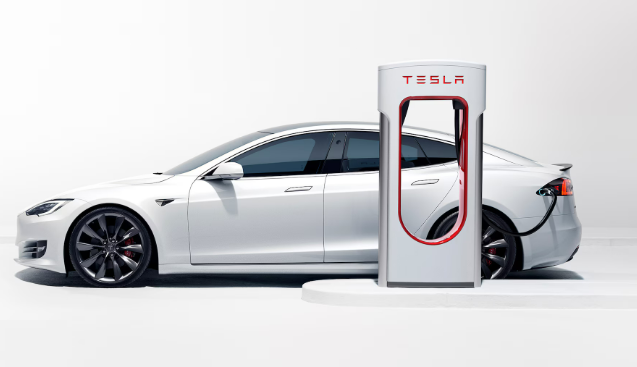Introduction
The Tesla Model S has long been a leader in the world of electric vehicles (EVs), but what happens when you’ve driven one for a quarter of a million miles? Recently, a 250,000-mile Tesla Model S showed us something surprising—it took nearly 3 hours to fully fast-charge. This unusual scenario raises questions about the longevity of EV batteries, fast-charging capabilities, and the long-term reliability of one of the most popular electric vehicles on the market. Here’s everything you need to know about the situation and its broader implications for electric vehicle ownership.
Key Specifications of the 250,000-Mile Tesla Model S
- Model: Tesla Model S
- Mileage: 250,000 miles
- Charging Time: Nearly 3 hours for full ‘fast’ charge
- Battery Health: Slight degradation observed
- Type of Charger Used: Tesla Supercharger
- Age of Vehicle: Several years old
- Vehicle Use: Regular daily use, including long-distance travel
This 250,000-mile Tesla Model S still delivers impressive performance despite its high mileage. However, the extended charging time highlights some of the challenges that owners of older EVs might face as the vehicle’s battery ages. Understanding the battery’s performance in relation to its age and mileage is crucial for future EV owners.
Top Features of the Tesla Model S at 250,000 Miles
- Battery Performance: While the vehicle’s battery health has slightly degraded, it still retains much of its range, showing the overall durability of Tesla’s technology.
- Fast-Charging Issues: Despite being a Tesla, known for its efficient Superchargers, the 250,000-mile Model S faced challenges with fast-charging, taking up to 3 hours for a full charge.
- Long Range Capabilities: Tesla vehicles, even with some battery degradation, continue to provide long-range driving, making them suitable for everyday use as well as long trips.
- Reliability: The Tesla Model S remains a highly reliable electric vehicle, even after hundreds of thousands of miles.
What Does a 3-Hour Charging Time Mean for EV Owners?
The fast-charging time of nearly 3 hours for this 250,000-mile Tesla Model S raises questions about how battery health and degradation impact charging speed. Over time, lithium-ion batteries—the type commonly used in electric vehicles—experience natural wear and tear, which can result in slower charging times and reduced overall range. As seen in this case, an older battery will likely need more time to charge than a newer one.
This issue is especially important for electric vehicle owners who rely on fast-charging stations for longer trips. The charging infrastructure, such as Tesla’s Superchargers, is designed to charge a battery quickly—typically in 30-45 minutes—but as batteries age, this time may increase, which is a critical factor to consider when planning long-distance travel in older electric vehicles.
The Technology Behind Tesla’s Fast-Charging
Tesla’s fast-charging technology, including its Superchargers, has revolutionized the way people charge electric vehicles. Tesla owners have been able to enjoy the convenience of charging their vehicles quickly on long journeys. However, as seen with this 250,000-mile Model S, the fast-charging system works optimally with newer batteries.
This situation is a reminder that while EV technology has come a long way, it’s still important to understand how battery degradation affects overall performance. It also serves as a learning point for EV manufacturers and owners alike, encouraging improvements in battery design and charging infrastructure to make electric cars even more practical for long-term use.
Battery Longevity and Sustainability in Electric Vehicles
Sustainability is one of the key selling points of electric vehicles. As more consumers move toward eco-friendly transportation, understanding how a vehicle’s battery holds up over time becomes an important factor. The Tesla Model S has shown impressive battery longevity with its 250,000 miles and provides insight into how EV batteries can perform over an extended period.
Although battery degradation is inevitable, Tesla’s battery management systems help preserve the health of the battery for as long as possible. Even with some signs of wear, Tesla’s batteries are among the most durable in the industry, ensuring that owners can enjoy their vehicles for many years.
FAQs
Q: Why did the Tesla Model S take 3 hours to charge after 250,000 miles?
A: Over time, EV batteries degrade, which can lead to slower charging speeds. In this case, the 250,000-mile Tesla Model S showed signs of battery wear, resulting in the increased charging time.
Q: How long do Tesla Model S batteries last?
A: The average Tesla Model S battery can last anywhere from 300,000 to 500,000 miles, depending on usage, maintenance, and other factors. After 250,000 miles, the battery still performs well, but it shows some signs of wear.
Q: Will the charging time improve with a battery replacement?
A: Yes, a new or replacement battery would likely restore the faster charging times, as the battery’s health would be improved.
Q: Is a 250,000-mile Tesla Model S still a good investment?
A: Yes, even after 250,000 miles, the Tesla Model S remains a highly reliable and durable vehicle. However, prospective buyers should be aware of potential battery degradation and charging speed issues.
Q: Can the Tesla Model S handle long-distance trips after 250,000 miles?
A: Despite some charging issues, the Tesla Model S remains a great vehicle for long-distance trips, though owners of high-mileage vehicles should plan for slightly longer charging times.
Conclusion: Longevity and the Future of EVs
This example of a 250,000-mile Tesla Model S is a valuable reminder of the importance of battery health in electric vehicles. While the Model S continues to impress with its overall performance, the extended charging time after so many miles offers insights into the challenges EV owners may face with aging batteries.
As the demand for electric vehicles increases, manufacturers like Tesla will continue to push the boundaries of battery technology, striving for longer-lasting, more efficient solutions. For now, the Model S stands as a testament to the longevity of Tesla’s engineering and its commitment to a sustainable future in the world of electric vehicles.

